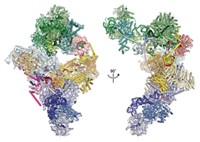Advertisement
Grab your lab coat. Let's get started
Welcome!
Welcome!
Create an account below to get 6 C&EN articles per month, receive newsletters and more - all free.
It seems this is your first time logging in online. Please enter the following information to continue.
As an ACS member you automatically get access to this site. All we need is few more details to create your reading experience.
Not you? Sign in with a different account.
Not you? Sign in with a different account.
ERROR 1
ERROR 1
ERROR 2
ERROR 2
ERROR 2
ERROR 2
ERROR 2
Password and Confirm password must match.
If you have an ACS member number, please enter it here so we can link this account to your membership. (optional)
ERROR 2
ACS values your privacy. By submitting your information, you are gaining access to C&EN and subscribing to our weekly newsletter. We use the information you provide to make your reading experience better, and we will never sell your data to third party members.
Biological Chemistry
To Save Space, Genomic DNA Is Packaged Into Chromatin
by Ivan Amato
July 17, 2006
| A version of this story appeared in
Volume 84, Issue 29

UNDER WRAPS
If stretched out and laid end-to-end, the DNA in a human cell's 46 chromosomes would span about 6 feet. Yet it fits inside of a nucleus only micrometers in diameter. Somehow, the DNA gets compacted by a factor of about 10,000.
Decades ago, researchers got their first peek at the cell's packing secret: Each chromosome is strung with thousands upon thousands of protein complexes called nucleosomes, like beads on a string. There are millions of nucleosomes in the nucleus of a human cell. Made of eight histone proteins each, these complexes provide the means for shrinking DNA down.
In an initial stage of compaction, the DNA wraps twice around each of these spoollike histone complexes. The resulting DNA-protein nucleosomes then fold in upon one another, forming a 30-nm-wide chromatin fiber. This fiber then buckles and coils, and buckles and coils again. With a few additional molecular players, the result is the familiar X- and Y-shaped chromosomes.
MORE ON THIS STORY
First named chromatin in 1882, this magnificent macromolecular structure has become the focus of many researchers who are convinced it is the central stage whose very structure helps determine which genes in a particular cell are active or silent. In recent years, scientists have been uncovering a plethora of gene-controlling chemical modifications that occur at specific locations in the vast chromatin landscape. "It is an amazing choreography," says C. David Allis, a chromatin researcher at Rockefeller University. The research field devoted to studying all of this chromatin activity, called epigenetics, is on a meteoric rise.





Join the conversation
Contact the reporter
Submit a Letter to the Editor for publication
Engage with us on Twitter